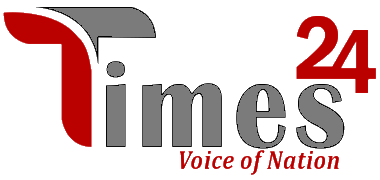H-1B visas, most frequently employed by Indian and Chinese companies, are generally approved for a period of three years for an individual, but many visa holders change employers to increase their US stay.
In yet one more policy stance change on H-1B visa within six months, the US administration on October 6 said it had been announcing an “interim final rule” which can “strengthen” the non-immigrant work visa programme. The new rules are going to be effective 60 days from their publication within the Federal Register, which is that the official journal of the United States government, very similar to the Gazette of India.
What is an interim final rule?
Executive policies announced by agencies like the Department of Homeland Security (DHS) or the US Citizenship and Immigration Services (USCIS) require them to consult stakeholders and provides them a notice period of 60 days and seek comments before any sweeping changes are brought in. This method allows agencies like DHS to act with urgency and within a specified time after a replacement rule or law is formed.
In the latest announcement on the proposed policy changes, the DHS said that USCIS would forgo the standard 60-day comment and see period to “immediately make sure that employing H-1B workers won’t worsen the depression caused by COVID-19”.
The impact that the pandemic was having on the US economy and its domestic workers was an “obvious and compelling fact” which justified the agency issuing an interim final rule.
What are the new proposed changes?
As per the Department of Homeland Security, whose main job is to secure the US from the threats it faces, the H-1B work visa regime had over the years gone far beyond the mandate that it had been launched, often “to the detriment folks workers”. Therefore, so as to bring back the integrity to the work visa regime, the DHS has announced some changes which might make sure that H-1B petitions are approved just for “qualified beneficiaries and petitioners”.
Though the precise contours and specifications of the change is probably going to be announced by the DHS over the week, it’s specified that the new rule will narrow down the definition of what constitutes a “specialty occupation”.
This means that companies and agencies which hire workers on H-1B visas will have a troublesome time proving to the immigration agencies that such employees aren’t available from the domestic pool folks workers.
The second proposed change relates to companies allegedly making fictitious work offers to fictitious employees just to fulfil their quota of H-1B visa applications approved. The US administration has within the past alleged that both Indian and therefore the US-based companies have often given H-1B work visa offers to foreign employees “just on paper”, thereby allowing them to evade some a part of taxes, while also undercutting the roles for eligible US workers.
The third and final proposed rule change talks about better enforcement of the new H-1B norms which can be announced later. This, the DHS said, are going to be done through worksite inspections and monitoring compliance, before, during and after the H-1B work visa is approved.
What are the new proposed changes?
As per the Department of Homeland Security, whose main job is to secure the US from the threats it faces, the H-1B work visa regime had over the years gone far beyond the mandate that it had been launched, often “to the detriment folks workers”. Therefore, so as to bring back the integrity to the work visa regime, the DHS has announced some changes which might make sure that H-1B petitions are approved just for “qualified beneficiaries and petitioners”.
Though the precise contours and specifications of the change are probably going to be announced by the DHS over the week, it’s specified that the new rule will narrow down the definition of what constitutes a “specialty occupation”.
This means that companies and agencies which hire workers on H-1B visas will have a troublesome time proving to the immigration agencies that such employees aren’t available from the domestic pool folks workers.
The second proposed change relates to companies allegedly making fictitious work offers to fictitious employees just to fulfil their quota of H-1B visa applications approved. The US administration has within the past alleged that both Indian and therefore the US-based companies have often given H-1B work visa offers to foreign employees “just on paper”, thereby allowing them to evade some a part of taxes, while also undercutting the roles for eligible US workers.
The third and final proposed rule change talks about better enforcement of the new H-1B norms which can be announced later. This, the DHS said, is going to be done through worksite inspections and monitoring compliance, before, during, and after the H-1B work visa is approved.
How will the changes impact Indian IT and other H-1B visa holders?
Every year, the US administration issues 85,000 H-1B work permits altogether. Of these, 65,000 are for people with specialty occupations, while the remainder 20,000 are reserved for those foreign workers who have earned a masters or higher university degree within the US. per annum, Indians and Indian companies corner a lion’s share of the amount of H-1B work permits issued annually.
As of April 1, 2020, the US Citizenship and Immigration Services (USCIS) had received about 2.5 lakh H-1B work visa applications, consistent with official data. Indians had applied for as many as 1.84 lakh or 67 per cent of the entire H-1B work visas.
Since the DHS has proposed to narrow down the definition of what would constitute a “specialty occupation”, it’s likely that the 65,000 visas issued per annum would be brought down significantly.
Though Indian information technology giants like TCS, Infosys, Wipro, HCL, et al. have within the past insisted that they need to reduce their dependence on H-1B visas to an outsized extent, a discount within the overall quota of H-1B visa workers would still mean that the number of workers they might either need to distribute extra money to rent local talent or pay more to the prevailing H-1B work visa holders.
The proposed change could also impact global IT companies which hire H-1B visa workers during a great number.
According to the US government’s official numbers, global tech giants like Amazon hired up to 3000 H-1B work visa holders in 2019, while Google hired between up to 2,500 such workers during the year. Most of those H-1B working papers holders were Indians.
H-1B visas, most frequently employed by Indian and Chinese companies, are generally approved for a period of three years for an individual, but many visa holders change employers to increase their US stay. The visa norms have often been criticised for allowing cheap labor within the US at the expense of its local workforce.
Latest News and updates, Follow and connect with us on Facebook, Twitter, and Linkedin
Get the latest updates directly on your mobile, save and send a message at +91-9899909957 on Whatsapp to start





